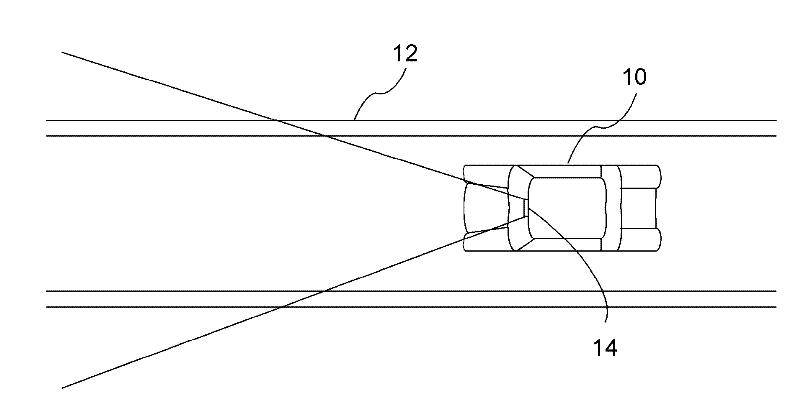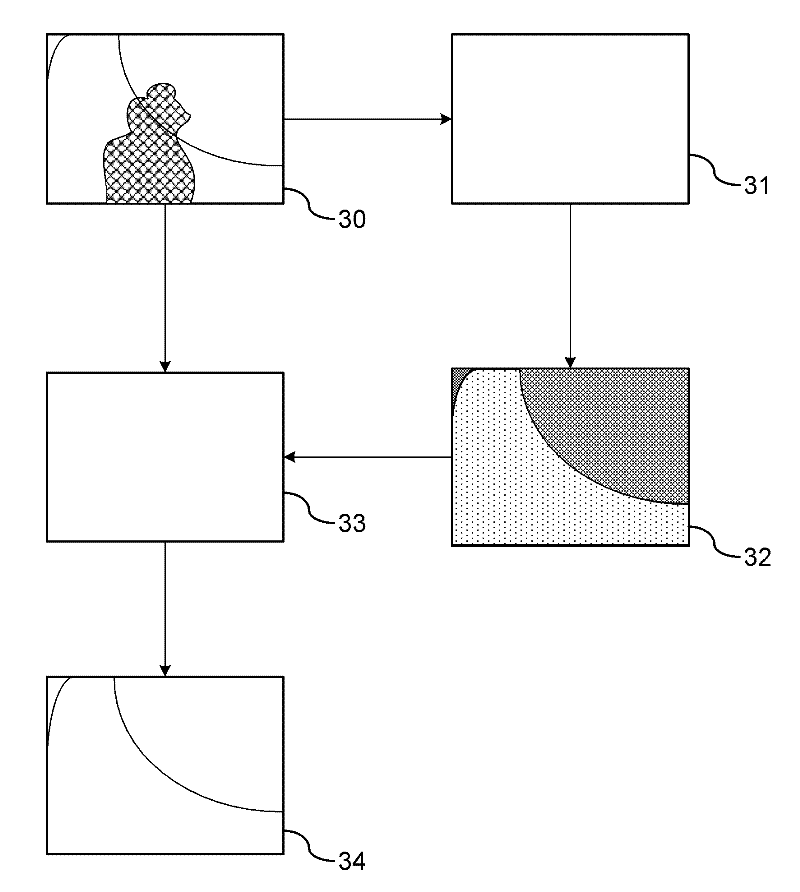Shadow removal in an image captured by a vehicle-based camera for clear path detection
An image-in-image technology, applied in the field of vision-based object detection systems, can solve problems such as being unsuitable for imagers
- Summary
- Abstract
- Description
- Claims
- Application Information
AI Technical Summary
Problems solved by technology
Method used
Image
Examples
Embodiment Construction
[0064] figure 1 A vehicle 10 is shown traveling along a road 12 . The vision-based imaging device 14 captures images of the road ahead of the vehicle 10 to detect images within a travelable area (hereinafter referred to as a clear path). A vision-based imaging device 14 is used to detect objects. In a preferred embodiment, vision-based imaging device 14 is used to identify clear paths or lane markings in roads for systems such as, but not limited to, lane departure warning systems. Vision-based imaging device 14 is preferably mounted inside the vehicle, just behind the windshield, for capturing events occurring outside and in front of the vehicle. While the vision-based imaging device 14 may be used for a variety of purposes (eg, to enhance a driver's night vision), the primary purpose described herein is for systems that need to recognize road markings, lane markings, road markings, or other road objects. Examples of such systems include, but are not limited to, lane depar...
PUM
 Login to View More
Login to View More Abstract
Description
Claims
Application Information
 Login to View More
Login to View More - R&D
- Intellectual Property
- Life Sciences
- Materials
- Tech Scout
- Unparalleled Data Quality
- Higher Quality Content
- 60% Fewer Hallucinations
Browse by: Latest US Patents, China's latest patents, Technical Efficacy Thesaurus, Application Domain, Technology Topic, Popular Technical Reports.
© 2025 PatSnap. All rights reserved.Legal|Privacy policy|Modern Slavery Act Transparency Statement|Sitemap|About US| Contact US: help@patsnap.com



